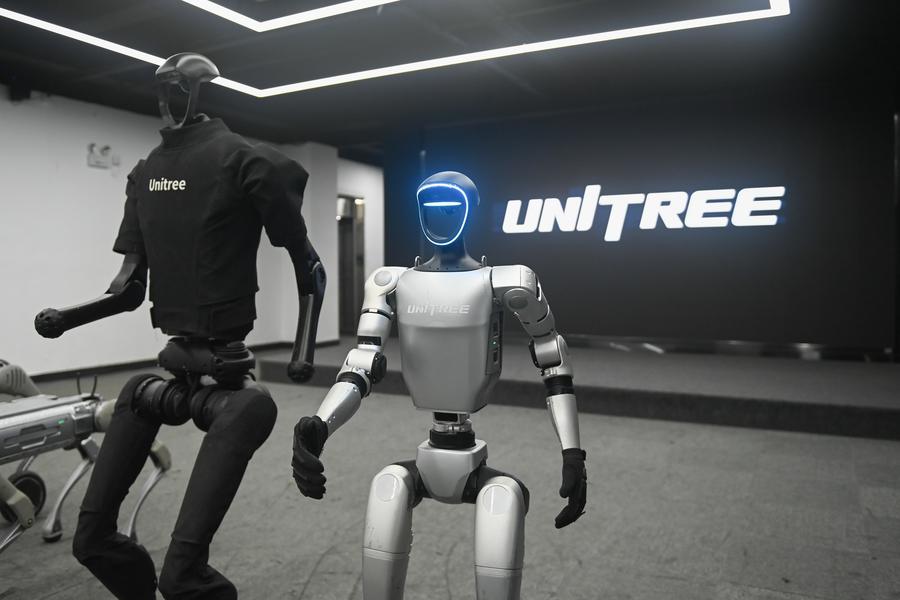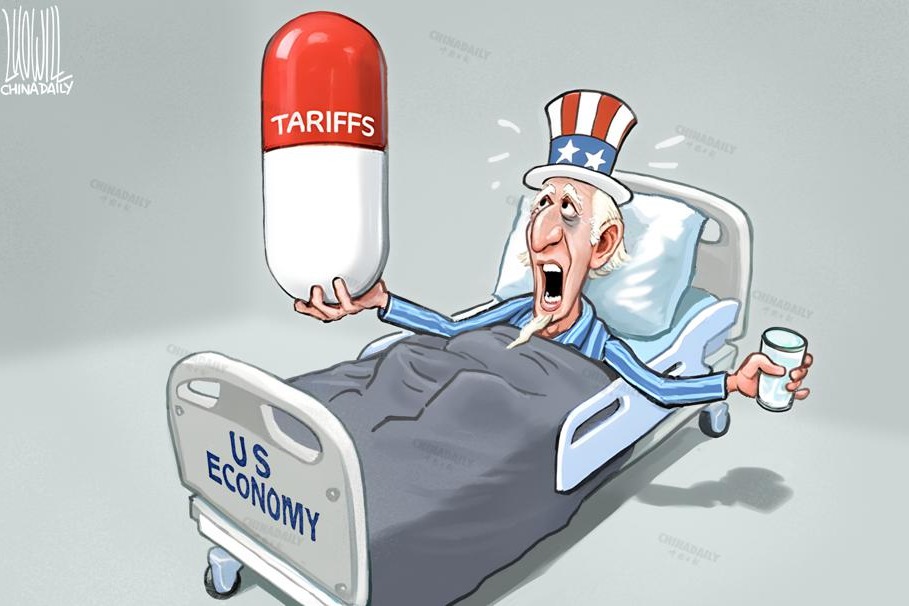Hannover Messe 2025 shows the potential of innovation


The five-day Hannover Messe 2025, the world's premier industrial technology exhibition, concluded on Friday, leaving an indelible mark on the global manufacturing landscape. This year's theme, "Shaping the Future with Technology", was most evident in the Chinese pavilions, where over 1,000 exhibitors from China demonstrated how the country is redefining industrial innovation amid the digital transformation and green transition.
The stars were pioneers in robotics from China, particularly Unitree Robotics from Hangzhou, Zhejiang province. The company had brought a next-generation quadrupedal robot dog and a sophisticated humanoid robot to Hannover Messe 2025. While most exhibitors kept their robots safely behind barriers, Unitree's robot dog moved seamlessly through the packed exhibition halls without colliding with anyone, thanks to its advanced LiDAR and 3D vision systems. Many visitors found themselves unwittingly participating in an impromptu marketing campaign as they followed the robot back to Unitree's booth, where they were greeted by the company's humanoid robot assistant.
According to Unitree engineers, while current applications focus on industrial inspections and R&D, the technology is rapidly evolving toward household applications, with prototypes already capable of performing basic chores through voice commands.
In the healthcare sector, Nanjing-based Triastek's demonstration of 3D-printed drug delivery systems was the highlight. The centerpiece was an elegant blooming capsule design that unfolds like a flower in the stomach.
The Chinese companies at Hannover Messe 2025 represent a remarkable evolution from just two decades ago, when China was primarily seen as a manufacturing base for Western designs. The West is now seeing the maturation of China's innovation ecosystem, which has progressed from just manufacturing things to inventing and developing them.
This transformation mirrors the broader arc of industrial history. The British-led industrial revolution in the 18th century introduced mechanization, while the US-led industrial revolution, in the late 19th and early 20th centuries, brought mass production. China has played a key role in the third industrial revolution, which was characterized by computer technology, and the country is now a driver of the latest industrial revolution characterized by new technologies such as artificial intelligence and cyber-physical systems.
What makes this era more unique is its collaborative nature, as demonstrated by the numerous Sino-European partnerships on display. Official statistics reveal the scale of China's participation, as Hannover Messe 2025 saw over 1,000 Chinese exhibitors, making China the largest foreign contingent, second only to the host country, Germany, a big increase in Chinese exhibition space compared to 2024. Also, a huge percentage of robotics-related exhibitors came from China. The event also saw a large number of major partnerships being announced between Chinese and European firms.
Hannover Messe 2025 has sent out a clear message: China has emerged as a major innovator capable of both breakthrough inventions and their practical industrial application. From robot dogs that could one day become household helps to pharmaceutical technologies that may redefine drug delivery, Chinese companies demonstrated they're not just participating in the latest industrial revolution but also leading it.
The Chinese delegation also underscored the importance of international collaboration in tackling global challenges like climate change and healthcare access. As the world moves toward finding increasingly complex technological solutions, events like Hannover Messe serve as crucial platform where ideas cross-pollinate across borders.
With Hannover Messe 2026 up next, industry watchers will be keen to see how China's industrial innovators build on this year's impressive showing and what new surprises they might unveil.

































